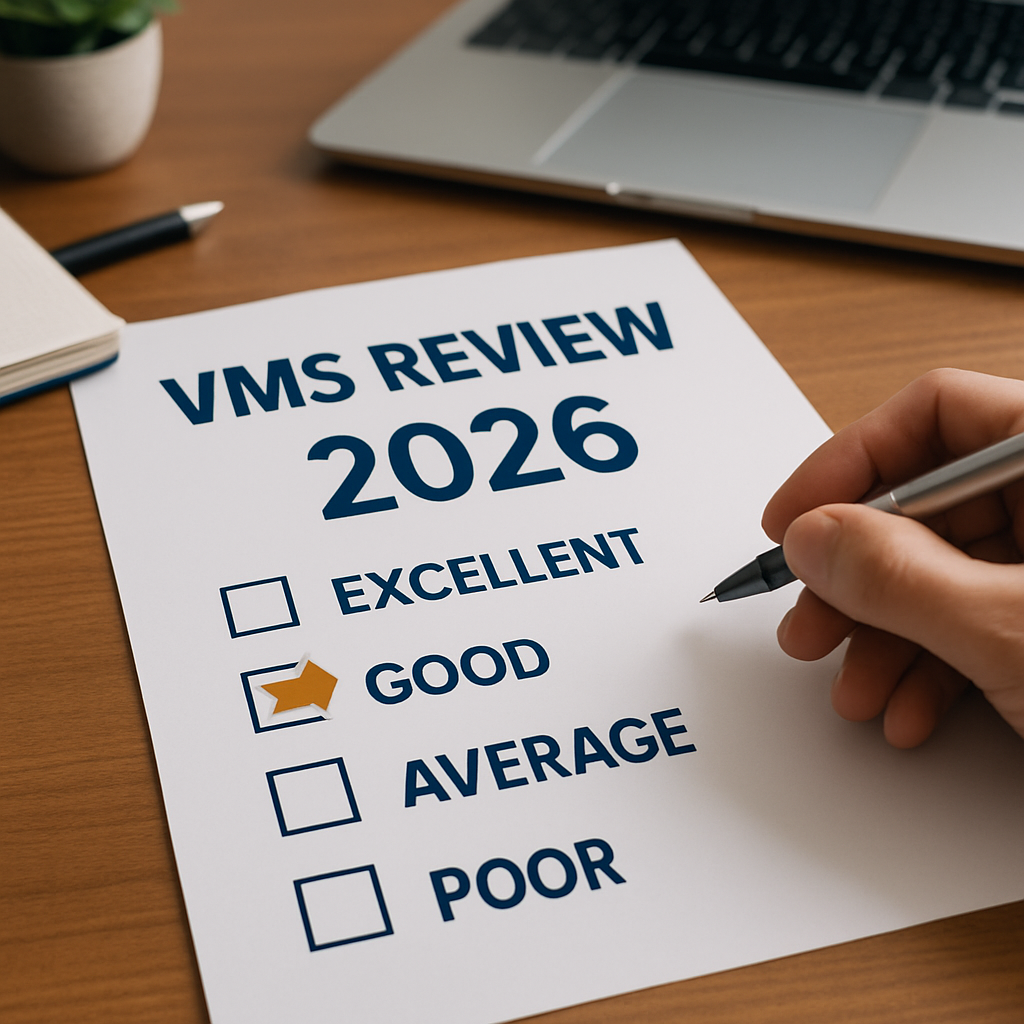Third-party staffing vendors are becoming increasingly more critical to a company’s success, yet many organizations are still managing these vendors with archaic manual spreadsheets that simply aren’t effective. In this article, we are going to take a look at some of the key reasons why managing staffing vendors with manual spreadsheets is ineffective, and why you should be using a vendor management system instead.
It’s no longer feasible to manage multiple staffing vendors, processes and contingent workers on time-consuming, manual and ineffective spreadsheets that only lead to a lack of visibility into your non-employee program.
It’s time to move beyond the spreadsheet, and use a vendor management system (VMS) that automates, centralizes and streamlines all of the processes associated with managing your contingent workers.
Why managing staffing vendors with manual spreadsheets is ineffective
Historically, many companies have created no real strategy for managing their non-employee workforce. Instead, vendor management took place in fragmented processes with departments typically managing their own vendors.
As a result, many departments managed staffing vendors using manual methods such as spreadsheets, in-house databases or Share-Point-like websites with no vendor consolidation or company-wide set vendor rates across the entire organization.
These fragmented methods of managing staffing vendors, as well as the time-consuming nature and human-errors that come with manual spreadsheets, left companies with a lack of visibility into the performance of their staffing vendors.
Here are just a few of the top risks associated with using manual spreadsheets to manage your staffing vendors:
1 - It wastes time that your employees could be using on higher-value tasks
Managing staffing vendors using manual spreadsheets is incredibly inefficient and time-consuming. This administrative workload, whether it is manual data entry or metric calculations, all adds up to a significant amount of time that your employees could have used on core business processes that actually add value to your organization.
Moving away from these manual processes with an automated system, such as a VMS, allows the teams working on your non-employee workforce program to focus on their KPIs - reducing costs and improving workforce quality.
2 - A lack of centralization leads to hidden risks
Companies that use manual spreadsheets typically have no real centralized contingent workforce program in place. This results in fragmented processes across your organization, where departments take on the management of their own non-employee workforce in which they set their own vendor standards and pay rates.
Multiple spreadsheets are probably saved across the business, and, depending where the spreadsheet is stored and who has access to it, spreadsheets may be edited, duplicated and saved separately. All this results in a lack of vendor consolidation across your business, giving you no real insights into how your vendors are performing and how much your company is spending on contingent workers.
3 - It leaves room for error
As much as we hate to admit it, we all make mistakes. Whether it’s missing a contract renewal, entering the data into a spreadsheet wrong or not updating information, the potential for errors when using spreadsheets is high.
Identifying errors isn’t easy either. Recalculating formulas across your spreadsheets and confirming all the information is updated accurately is a near impossible task. Small errors on your spreadsheets lead to misspent funds, rogue spend and possibly even non-compliance - and, worst of all, you probably have no idea that these errors even exist.
4 - It's challenging to produce accurate reporting
With manual spreadsheets, your business will have to view data and come up with the correct formulas to successfully analyze how your contingent workforce program is performing against your KPIs. This is incredibly time-consuming, and any errors on the spreadsheet will completely skew the results.
By automating this process, you can create customized, reliable and accurate reports that actually show you how your staffing vendors are performing - giving you all of the data you need to ensure your business is achieving its workforce goals.
5 - Spreadsheets result in inefficient workflows across your company
Non-employee workforce programs are complex. They likely involve your executives, HR team and possibly even a procurement department and legal team if your company is large enough to have those in-house. Sharing a spreadsheet across these departments that needs to be edited and updated in real-time creates inefficient workflows across your business.
Spreadsheets require daily updating, measurement and analysis. Sharing this across multiple departments is not only highly inefficient, it leaves the door open for errors and that only leads to hidden costs and low-quality workforce decisions.
Why you should use a vendor management system instead of manual spreadsheets
There’s no other way to put it. Manual spreadsheets simply fall short of what your business needs to effectively manage staffing vendors and your contingent workforce program.
Instead, organizations (yes, even those with smaller contingent workforce budgets) should use a VMS to automate and consolidate their non-employee workforce program and the staffing agency management process.
A vendor management system acts as a mechanism for your business to consolidate all processes and data associated with the procurement and management of your non-employee workforce and the staffing vendors you partner with.
By consolidating your entire contingent workforce program in one centralized location, your company will have clear visibility and control over vendor relationships, vendor analytics, pay rates and much more.
Learn more about the benefits of a VMS
Learn more about the Benefits of a VMS and what to look for when choosing the best VMS for your organization. Download our Free VMS Buyer's Guide here:
Discover the Power of Conexis VMS
Conexis VMS is purpose-built for organizations seeking to manage their contingent labor spend effectively. Here’s why we're the right choice:
- Fast Deployment: Get up and running in weeks, not months
- Transparent Pricing: Flexible pricing with no hidden costs
- White-Label Ready: Customize the platform with your brand
- Real-Time Insights: Make faster decisions with built-in analytics
- Audit-Ready Compliance: Store contracts, worker data, and rates in one secure hub
About Conexis VMS
Conexis is an award-winning Vendor Management System built for organizations that want the power of enterprise software without the complexity or cost.
Leveraging the latest technology, Conexis delivers the expertise, reliability and security of enterprise systems, while offering the flexibility, user friendliness and tailored, personal service you require. Learn more about our Company and why organizations Choose Conexis VMS.
Looking to Switch Your VMS or Just Getting Started?
Whether you are looking to Switch your VMS, or just Getting Started, we are here to help. Contact Us for a Free No-Obligation Consultation, See how Easy Conexis is to use by taking a quick 2 minute Self-Guided Online Demo, or Book a Personal Demo Today!
Additional articles on the Managing Contingent Workforce Risk: Managing Risk Guide
- Co-Employment Risk: How a VMS Shields you from Risk
- Misclassification: A Critical Risk for Contingent Workforce Programs
- 10 Ways a VMS helps reduce Contingent Workforce Compliance
- How to Identify the Hidden Risks in Your Contingent Workforce Program
- How to Track Contingent Workforce Compliance Risk with a VMS
- What is Contingent Workforce Compliance Risk?
- Is your Staffing Agency putting your company at risk?
- The Benefits and Risks of Hiring Contingent Workers
- The Top 5 Contingent Workforce Risks and How to Manage them
- How a VMS keeps you compliant and audit-ready







